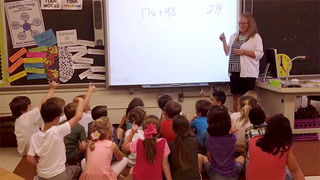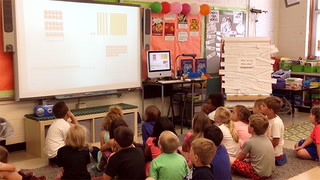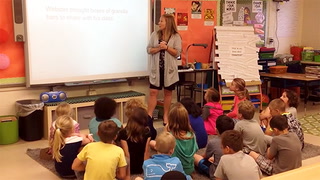Series Math Routines with Kristin Gray: Second Grade: Subtraction Number String: Second Grade
Math.2.NBT.B.5
Common core State Standards
- Math: Math
- 2: Grade 2
- NBT: Number & Operations in Base Ten
- B: Use place value understanding and properties of operations to add and subtract
-
5:
Fluently add and subtract within 100 using strategies based on place value, properties of operations, and/or the relationship between addition and subtraction.
Save to My Resources
PLEASE CREATE A NEW ACCOUNT OR LOG IN TO ACCESS THIS CONTENT
Enjoy your first video for free. Subscribe for unlimited access.
Have questions about subscribing?
Click Here to learn more about individual subscriptions.
Click Here to learn more about School and Institution access.
A number string is a series of mathematical expressions organized in a way that encourages students to build on their thinking as the string progresses.
Discussion and Supporting Materials
School Details
Shields (Richard A.) Elementary School910 Shields Avenue
Lewes DE 19958
Population: 560
Data Provided By:

Teachers
Kristin Gray
Math / Kindergarten 1 2 3 4 5 / Teacher
Newest
|
4 MIN
|
5 MIN
|
5 MIN
UNCUT CLASSROOMS
| TCHERS' VOICE
English Language Arts













7 Comments
Sandra Dominguez Jul 27, 2019 1:25pm
I really loved how the students engaged in this activity and how they were able to follow the number string and explain why. Then had them demostrate their understanding!
Jessica Dunn Apr 28, 2018 6:26pm
Lynn Barashkoff Apr 9, 2018 2:02am
Kristin Gray Sep 4, 2017 8:50am
Amanda Jansen Sep 3, 2017 1:31pm